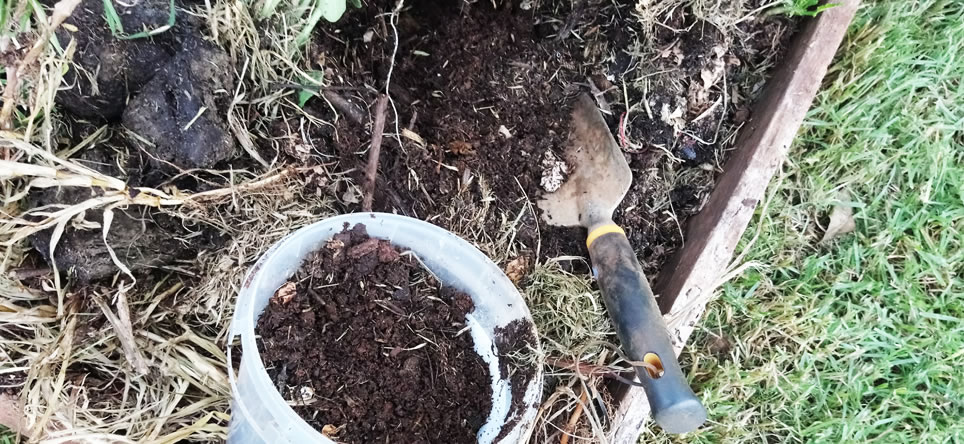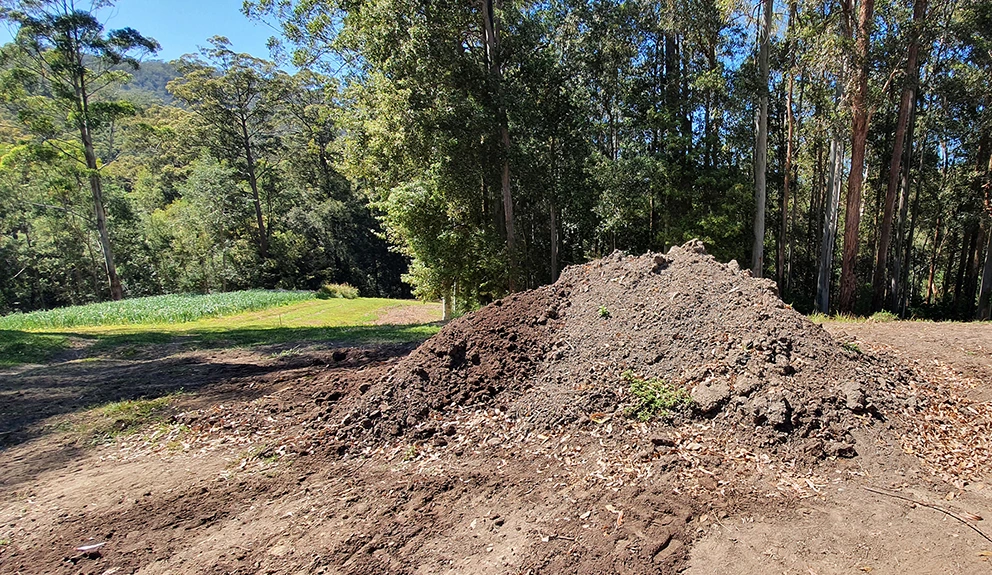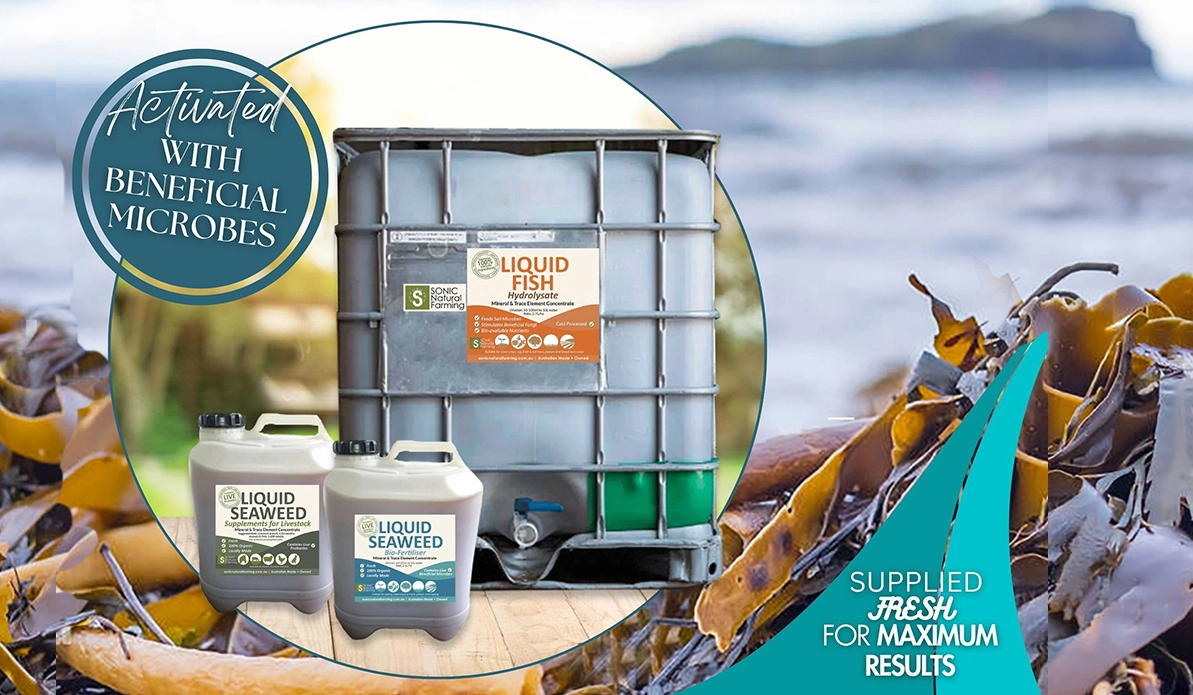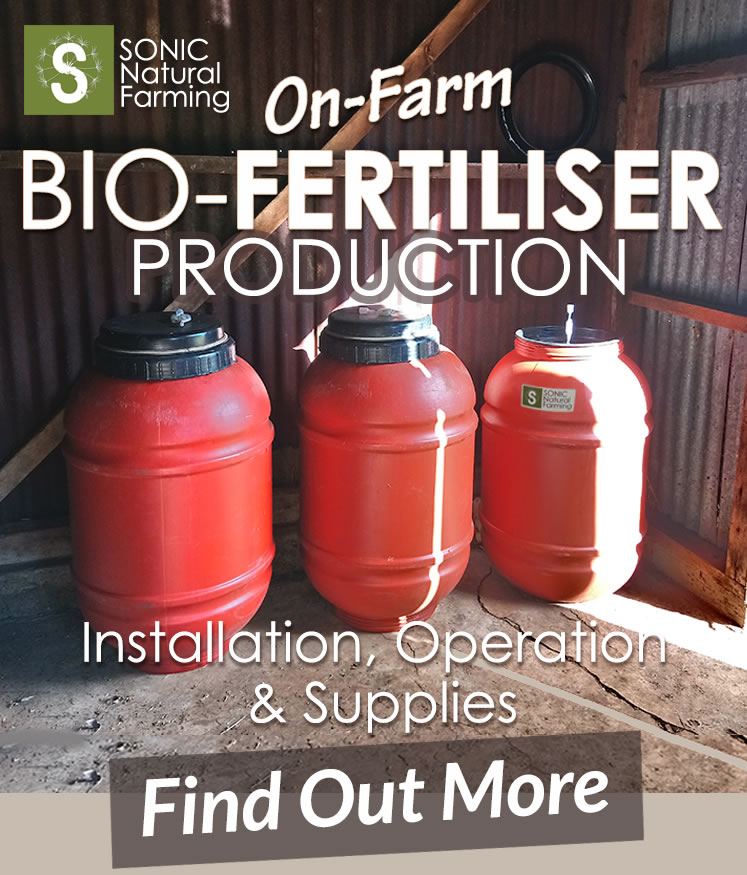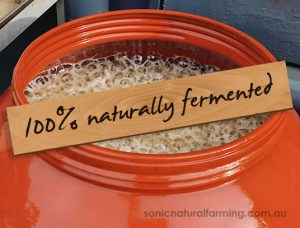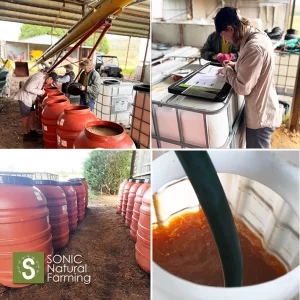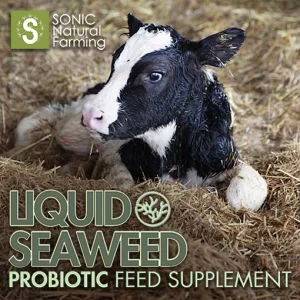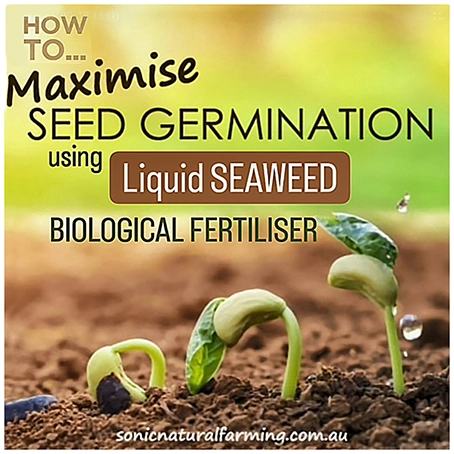Discover how to make organic compost to enhance soil health, reduce waste, and promote nutrient-rich plant growth. Find out the numerous benefits of fermentative composting, also sometimes known as the SPIC method, and learn how this sustainable composting method can boost plant health in your garden and on the farm.
Fermentative composting, or Static Pile Inoculated Compost (SPIC), is an effective and sustainable way to convert organic waste into nutrient-rich compost. By following a few key steps and considering factors such as mass, moisture, and material, you can successfully create high-quality compost for your home garden or agricultural needs.
The benefits of producing your own nutrient rich soil, using a fermentative composting method, means no turning (optional), no aerating, and low water usage.
Where to Locate Your Compost Pile
Locating your compost pile on the ground is a great way to stimulate indigenous microbes naturally. These microbes play a crucial role in breaking down organic matter and turning it into nutrient-rich compost for your land or garden.
Low borders around the compost pile make it easy for you to access it from all sides. This accessibility allows you to turn and aerate the compost easily, helping to maintain optimal conditions for microbial activity.
Nutrient dense, fertile soil (humus) is light and fluffy and always smells good! To build a compost using the fermentative composting method, start by mounding your organic material, on the ground, using the following 3 basic guidelines;

The above compost pile is setup to become a garden, using a compost tractor method. Using netting over the compost pile can stop animals getting in, while still allowing rain, or manually applied water, to penetrate the pile.
1. Compost Mass
The first step in making compost is to gather the organic materials that will serve as the base for your compost. This can include kitchen scraps, yard waste, leaves, grass clippings, and other biodegradable materials. It’s important to ensure a good balance between carbon-rich “browns” (such as dried leaves) and nitrogen-rich “greens” (such as food scraps) for optimal decomposition.
Next, consider the mass of your compost pile. A larger pile tends to retain heat better and decompose more efficiently. Aim for a pile that is at least four feet in height and width to maintain proper heat levels throughout the fermentation process.
There are a few reasons why it is beneficial to have compost piles placed on bare ground. One, it makes the pile easily accessible for taking soil, for digging, or for turning. And two, it is so that the pile can access the soil microorganisms already present in the ground.
Mirum Creek Organics compost pile (above image)
2. Compost Moisture
Moisture is another critical factor in fermentative composting. The ideal moisture content should be around 50-60%. Too much moisture can lead to anaerobic conditions and unpleasant odors, while too little moisture can slow down decomposition. Regularly monitor the moisture levels of your compost pile by squeezing a handful of material – it should feel damp but not overly saturated.
Optional Compost Turning
During the fermentation process, you can turn or mix the compost regularly. This helps distribute oxygen throughout the pile and can promote faster decomposition. Consider using a pitchfork or shovel to turn the materials every few weeks or whenever you notice a decline in temperature or activity within the pile.
Beneficial microorganisms, and other soil life, need moisture to survive and reproduce. Acquiring the right mass helps to maintain moisture in the compost pile. Watering the pile, like watering the garden, is particularly beneficial at the early stages of fermentative composting, to help contribute to moisture for the biology.
Where possible, use non-chlorinated water, as chlorine destroys microbes and avoid over waterering.
Read the Signs
If you notice a lot of ants, mice or rats in your compost then it is an indicator that it is too dry, or the food scraps have not been sufficiently covered. Adding fresh grass clippings to the top of the pile alongside applying Liquid Biological Fertilisers can help add to, and maintain, the moisture.
If the weather is particularly dry you may also consider covering the pile with a tarp, or shade cloth, and a large rock or heavy object in the top centre to trap condensation (wicking).
Additionally, it’s beneficial to monitor the temperature of your fermentative compost pile. Ideally, temperatures should reach between 120-160°F (49-71°C) during active decomposition. This ensures that harmful pathogens are killed off while beneficial microorganisms thrive.

Moisture meters and temperature meters can be used to regularly check the moisture and temeperature of your compost. Available in Australia from online stores like ‘Ground Grocer’.
3. Compost Material
Soil biology requires food in the way of organic material to eat and convert into humus. Cut organic matter up to reduce the time it takes to decompose before adding to the fermentative compost. This also makes it easy for the worms and soil life to break down.
Organic Material to include;
- Manure (horse, cow, chicken, pig, goat)
- Hay mulch
- Broken down woodchip or wood shavings
- Charcoal
- Rock phos minerals
- Grass clippings (excellent as a top cover)
- Paper, paper towel and cardboard
- Leaf litter
- Garden waste
- Vegetable food scraps
Avoid using contaminated material, plastics and metals. Always keep ‘dead’ or ‘rotting’ material covered with a thick layer of soil, mulch or grass clippings at all times.
Time and Patience
Patience is key when it comes to fermentative composting. The process can take anywhere from a few weeks to several months, depending on various factors such as the materials used and environmental conditions. Regularly check the progress of your compost by observing its texture, smell, and temperature.
Ways to Activate your Compost
There are a number of ways to activate a compost. A dead, or decomposing animal will bring in a variety of hardy microbes, (make sure it is buried deep). Comfrey is a great activator and is full of minerals. Read about Comfrey and its uses in the Garden and on the Farm.
Another excellent way to fast-track the process of fermentative composting, is by adding Biostimulants that include beneficial microorganisms.
SONIC Seaweed Biofertiliser and Fish Hydrolysate add beneficial microorganisms, as well as a full range of organic minerals and trace elements to the compost.
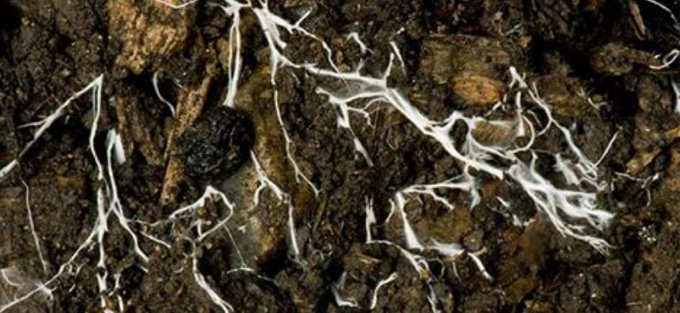
Mycelium forming in a compost pile is a root-like structure of a fungus consisting of a mass of branching.
As the compost pile ferments, it will shrink by about 2/3rds over time, and the temperature will drop, which is the indicator to harvest your soil and/or add more organic matter to keep the compost pile ‘fermenting’.
Making your own compost is a low cost, simple method for producing fertile soil on a large or small scale. And, the fermentative compos method does not require turning or aerating the compost because the microbes, additionally acquired through the Biostimulants, will do all the work.
However, remember, moisture is as important in a compost as in your garden or on your land, so treat it the same as your garden and if it is dry, then give your compost pile a good drink!
The soil microbiome has a tremendous influence on our own microbiome which contributes to personal health and well being. So, when thinking about growing produce, don’t overlook the importance of microbe rich, healthy soil, not only for the health of your plants but also for healthy humans.
Happy Soil Building!

